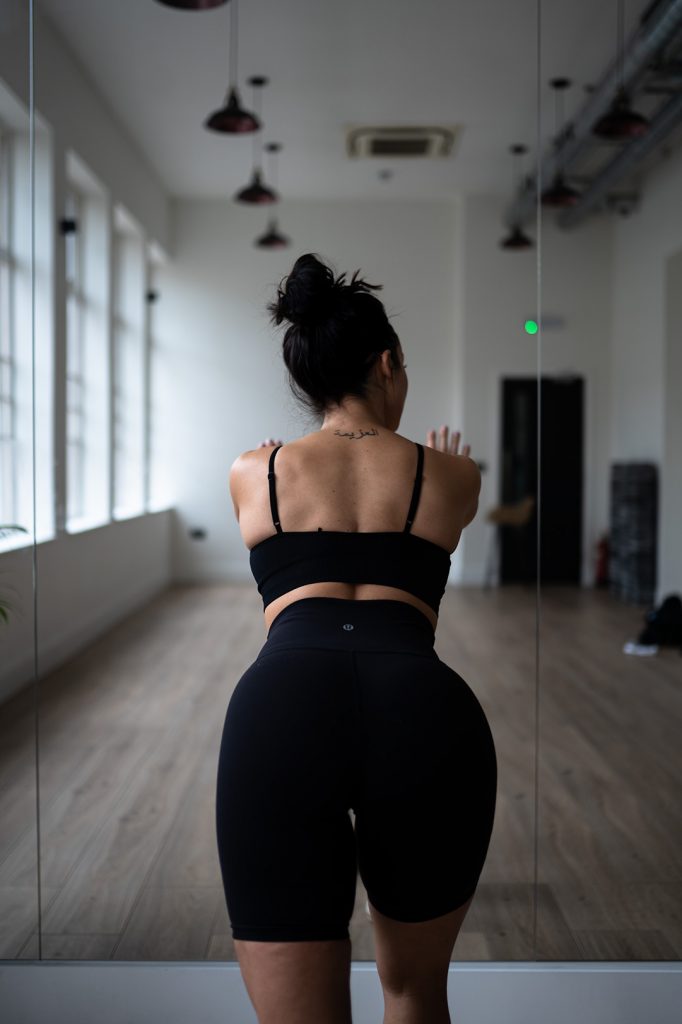If you’re someone who performs most of their training in a gym, with weights and a variety of equipment then the idea of having to train at home for the foreseeable future probably feels frustrating to say the least. You need surprisingly little equipment to mimic most of what you might usually do in the gym. You can also do plenty with your own bodyweight but I can’t say it’ll mimic the same as your training in the gym.
If you’re able to access equipment at home my top recommendations would be: one short resistance band (preferably fabric), a set of long resistance bands with handles and a door anchor (failing that two looped long resistance bands – one light and one heavy – will do) and a set of dumbbells. If you can stretch to two sets of dumbbells – one lighter for upper body movements and one heavier for lower body movements – even better, but not essential by any means. The above equipment is enough to put together a fairly comprehensive programme at home.
This brings me onto my next point; whilst this might be strange and difficult period for us all the importance of routine and structure still apply. Just like you might be setting yourself up with a new “lockdown” routine, apply the same principals to your training; plan out your workouts ahead of time, work out what day’s you’ll be training and set aside dedicated time each day where you’ll get your workout in. My caveat to this is to remember to be kind to yourself – as I always reiterate to clients, a balance of accountability (to your physical and mental wellbeing) along with self-compassion is key. Don’t be a slave to your schedule if you’re feeling burnt out or tired. A plan is there to provide guidance, not gospel.
If you’re someone that is normally motivated by your log book, by beating numbers and lifting heavier, then training at home might feel restrictive, but there are plenty of ways you can continue to apply progressive overload in your home programme that don’t involve needing to lift heavier.

Try these
- Incorporate more supersets, tri-sets, even giant sets
- Add more reps or sets over time
- Perform movements utilising both dumbbells/weight as well as resistance bands
- Reduce rest times between sets
- Add in drop-sets utilising resistance bands or just bodyweight
- Add in sets to failure
- Play around with the tempo of different movements; incorporate explosive movements, slow eccentrics, partial reps!
My other key piece of advice relates to mindset. Always remember that whilst we cannot control everything that happens to us, we can control how we respond to it. You might not be able to achieve big strength gains or large body compositional changes right now, but you can still utilise this time to achieve other things. My advice is to really hone in on your motor patterns. Focus on where you’re feeling a movement. Learn how to properly create mechanical tension in the muscle you’re targeting and perfect your execution. Then when you are able to apply more load again you’ll be able to do it better than before.
In the same vein use this time to address any other weaknesses; such a core control or perhaps mobility (which I know we could also do with addressing a little more!) Now is the perfect time to practice new skills, drills and movements in the privacy of your own home, without worrying about others around you. For me, I’ve taken up yoga and have already failed multiple times in attempts to contort myself into positions that I’m doubtful my body isn’t meant to be in. But nonetheless, I persist and am now finding it relatively enjoyable.
Lastly, I will add that this is merely advice, please take it with a pinch of salt. You and your life are more than a long-list of self-improvement projects. If your biggest achievement throughout this period is simply getting out of bed each day then so be it. Your worth is not dependent upon your productivity. Remember that.